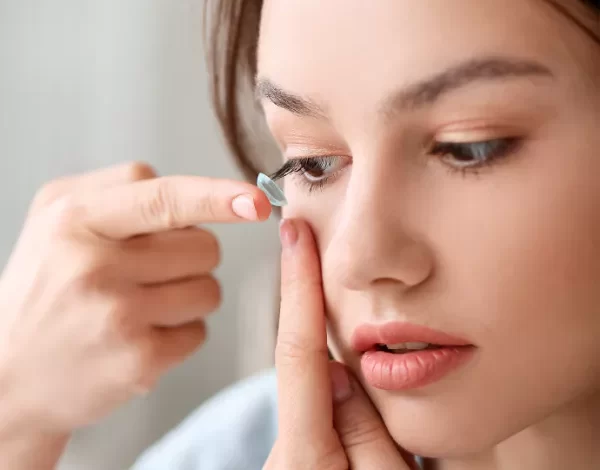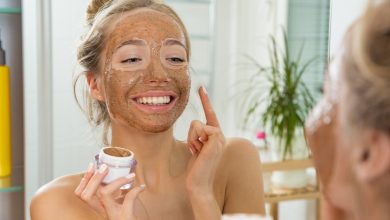Your Eye Doctor Wants You to Quit This Common Contact Lens Practice

Contact lenses have revolutionized the way millions of people see the world. They provide convenience, freedom from glasses, and, in many cases, improved vision for individuals with certain conditions. But while contact lenses are widely used and generally safe, they require responsible care. Unfortunately, many wearers unknowingly engage in risky behaviors that can harm their eyes.
Eye doctors across the globe warn against one specific, common contact lens practice that continues to put patients at risk: sleeping in contact lenses that are not designed for overnight wear.
If you are guilty of falling asleep with your contacts in—whether intentionally or by accident—this article is for you. Below, we’ll explore why this habit is so dangerous, what happens to your eyes when you sleep in lenses, and what steps you can take to protect your vision.
Why People Love Contact Lenses
Before diving into the risks, let’s appreciate why contact lenses have become so popular.
- Aesthetic appeal: They provide clear vision without altering appearance the way glasses do.
- Convenience for activities: Athletes, performers, and active individuals often prefer contacts because glasses can slip, fog, or break.
- Expanded vision: Contact lenses provide a wider field of vision compared to glasses.
- Special features: Some lenses correct conditions like astigmatism, keratoconus, or presbyopia.
Because of these benefits, more than 45 million Americans wear contact lenses, according to the Centers for Disease Control and Prevention (CDC). But along with popularity comes misuse.
The Common Practice Eye Doctors Warn About
The number one mistake contact lens wearers make is sleeping in their lenses when they are not designed for overnight wear.
This practice is so common that surveys suggest one-third of contact lens users admit to it regularly. Some do it accidentally—falling asleep on the couch or forgetting to remove lenses at night. Others do it intentionally because they want to avoid the hassle of daily removal.
Unfortunately, even a single night of sleeping in contacts can cause harm, and repeated behavior dramatically increases the risks.
What Happens to Your Eyes When You Sleep in Contacts
Your eyes are delicate organs that need oxygen to stay healthy. The cornea—the clear dome-shaped surface at the front of your eye—has no blood vessels, so it absorbs oxygen directly from the air.
When you wear contact lenses, they act like a barrier. Most modern lenses are designed to be breathable, but oxygen flow is still reduced compared to when your eyes are bare.
During sleep:
- Your eyelids are closed, further reducing oxygen exposure.
- Tear exchange slows down, which means debris, bacteria, and proteins are not cleared efficiently.
- Microbes thrive in the warm, moist environment created under the lens.
This combination creates a perfect storm for infections and complications.
The Risks of Sleeping in Contact Lenses
Here’s why eye doctors urge you to quit this habit:
1. Increased Risk of Eye Infections
Sleeping in contacts raises your risk of microbial keratitis, a serious corneal infection, by 6 to 8 times.
Microbial keratitis can be caused by bacteria, fungi, or amoebas, and it can lead to:
- Severe eye pain
- Redness
- Blurred vision
- Discharge
- Corneal scarring or even blindness if untreated
2. Hypoxia (Oxygen Deprivation)
When your cornea doesn’t get enough oxygen, it can swell—a condition known as corneal edema. This leads to blurred vision, halos around lights, and long-term damage to corneal cells.
3. Corneal Ulcers
An ulcer is an open sore on the cornea caused by infection or inflammation. Contact lens wearers who sleep in their lenses are at much higher risk of developing ulcers, which can leave permanent scars.
4. Eye Irritation and Dryness
Even if you don’t develop an infection, you may experience dryness, irritation, redness, or a gritty feeling after sleeping in contacts. Over time, these symptoms can worsen and affect your quality of life.
5. Potential Vision Loss
In severe cases, untreated infections or ulcers from sleeping in contacts can result in partial or complete loss of vision. While rare, this is a real and devastating possibility.
Why People Still Do It
Despite warnings, many people continue to sleep in their lenses. Why?
- Convenience: Removing lenses feels like an extra step, especially when tired.
- Forgetfulness: Falling asleep on the couch or after a long day happens to everyone.
- Complacency: Some think, “I’ve done it before and nothing happened, so it must be fine.”
- Misinformation: Many mistakenly believe all contact lenses are safe for overnight wear.
The reality is that only specific lenses are FDA-approved for extended wear, and even then, risks remain higher than with daily removal.
What Studies Reveal
Several large-scale studies highlight the dangers of this practice:
- The CDC reports that sleeping in contact lenses is the most common behavior linked to serious fungal eye infections.
- A study in the journal Ophthalmology found that overnight lens wear accounts for over 50% of contact lens–related microbial keratitis cases.
- Research shows that extended wear increases infection risk even with newer silicone hydrogel lenses designed to allow more oxygen through.
These findings confirm what eye doctors have been saying for years: The risks are not worth it.
Are Any Lenses Safe for Sleeping In?
Yes, but with caveats. Some lenses are approved for extended wear, meaning they can be left in for up to 6 nights or even 30 nights, depending on the brand and your eye health.
However:
- Even with these lenses, infection risk remains higher than with daily removal.
- Not everyone’s eyes are suitable for extended wear—your eye doctor must evaluate you first.
- Regular checkups are essential to monitor corneal health.
So while these lenses exist, most doctors still recommend taking them out before bed whenever possible.
Other Common Bad Habits with Contact Lenses
Sleeping in contacts is the most concerning practice, but it’s not the only one. Eye doctors also caution against:
- Wearing lenses past their replacement date (e.g., keeping monthly lenses for 2–3 months).
- Topping off solution instead of using fresh disinfectant each time.
- Rinsing lenses with tap water, which can contain dangerous microbes like Acanthamoeba.
- Swimming or showering in lenses, which increases infection risk.
- Not washing hands before handling contacts.
Each of these habits adds to the cumulative risk of eye problems.
What You Should Do Instead
If you wear contact lenses, here are safe practices to protect your eyes:
- Always remove lenses before sleeping unless prescribed extended-wear lenses by your doctor.
- Follow replacement schedules (daily, bi-weekly, or monthly) as instructed.
- Use only approved solutions and never top off old solution.
- Keep water away from contacts—no swimming, showering, or rinsing with tap water.
- Wash your hands thoroughly before touching your lenses.
- Give your eyes a break by wearing glasses occasionally.
- Schedule regular eye exams to catch early signs of complications.
What to Do If You Accidentally Sleep in Your Lenses
Everyone makes mistakes. If you fall asleep in your contacts:
- Don’t panic. Remove them carefully once you wake up.
- Lubricate with artificial tears before removal to avoid pulling at a dry lens.
- Give your eyes a break—wear glasses for the rest of the day.
- Monitor for symptoms like redness, pain, light sensitivity, or discharge.
- See your eye doctor immediately if symptoms appear.
Early treatment can prevent minor issues from turning into serious infections.
Personal Stories: The Real-Life Consequences
Many patients only realize the seriousness after experiencing complications. For example:
- Case 1: A college student slept in monthly lenses for convenience and developed a painful corneal ulcer. She required weeks of treatment and was left with a permanent scar that reduced her vision.
- Case 2: A young professional ignored irritation after sleeping in lenses. Within days, he developed a bacterial infection that nearly cost him his eyesight.
- Case 3: An athlete used extended-wear lenses but didn’t attend regular checkups. He developed hypoxia-induced corneal swelling, which impacted his sports performance.
These stories highlight why prevention is far better than treatment.
Why Eye Doctors Stress This Message
Eye doctors are not trying to inconvenience you when they caution against certain habits. Their goal is simple: to protect your vision for life.
The cornea does not regenerate the way other tissues do. Once scarring or vision loss occurs, it is often permanent. That’s why doctors emphasize prevention through proper contact lens hygiene.
Looking Ahead: Innovations in Contact Lens Safety
The contact lens industry is continually evolving. Some advances include:
- Daily disposable lenses: Reduce infection risk because you use a fresh pair every day.
- More breathable materials: Silicone hydrogel allows more oxygen through.
- Smart lenses under development: May monitor eye health or adjust focus automatically.
While these improvements enhance safety, they don’t eliminate the dangers of sleeping in lenses not designed for it.
Final Thoughts
Contact lenses are a modern marvel, but they demand responsibility. The most common—and most dangerous—bad habit among users is sleeping in lenses not intended for overnight wear.
Your eye doctor wants you to quit this practice because it can lead to infections, ulcers, vision loss, and long-term damage. While the convenience of leaving lenses in overnight may be tempting, the risks far outweigh the benefits.
Protect your eyes by removing your lenses before bed, following hygiene guidelines, and attending regular checkups. Your future self will thank you for preserving your vision.




